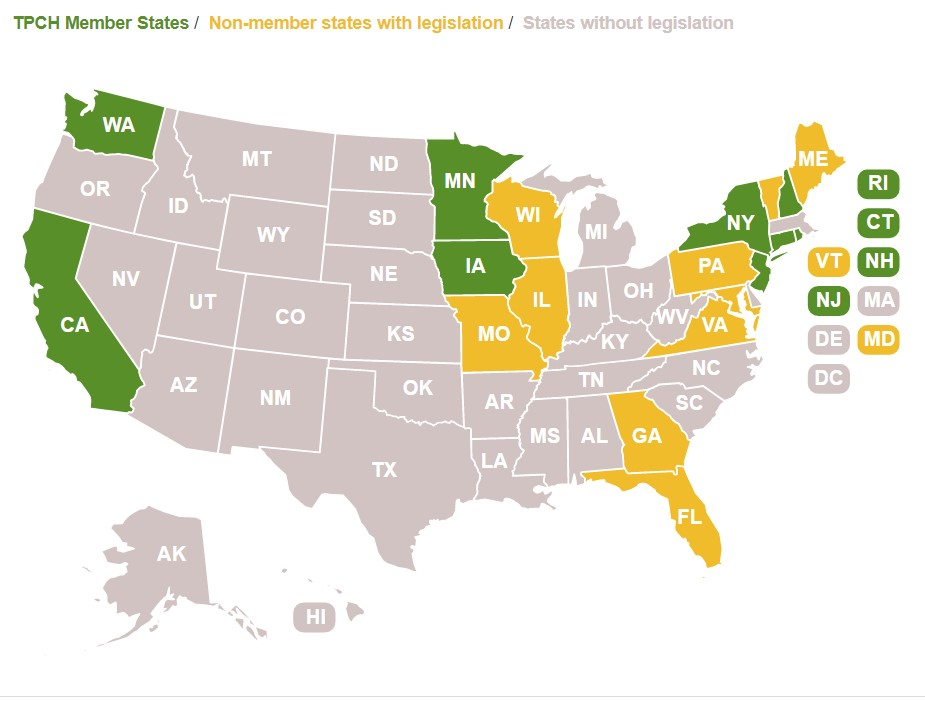In February 2021, the Toxics in Packaging Clearinghouse (TPCH) announced the organization’s 2021 update to their Model Toxics in Packaging Legislation. The update includes the addition of the class of perfluoroalkyl and polyfluoroalkyl substances (PFAS) and ortho-phthalates as regulated chemicals, as well as new processes and criteria for identifying and regulating additional chemicals of high concern in packaging. The previous (prior to 2021) TPCH Model Legislation and laws enacted in 19 states prohibit the intentional use of cadmium, lead, mercury, and hexavalent chromium in any finished package or packaging component. The laws also limit the total incidental concentration of the four metals to 100 ppm.

The main revisions include:
- Include phthalates and perfluorinated and polyfluorinated alkyl compounds (PFAS) in the list of controlled substances;
- Add
new processes and standards for identifying and controlling highly concerned
chemical substances in packaging;
The 2021 updated "Demonstration Regulations for the Control of Toxic Substances in Packaging Materials" issued by TPCH for hazardous substances control requirements for packaging and packaging components are as follows:
Toxic chemicals | Control requirements | Effective date |
lead, cadmium, mercury and hexavalent chromium | Sum≤100 ppm, same as old version | February 16, 2021 |
Phthalates | Sum≤100 ppm, this time added | |
Perfluoroalkyl and polyfluoroalkyl substances (PFAS) | Not detected, this time added |
Others:
a. Each state can adopt changes to their existing laws or adopt a new law to address new added toxics in packaging.
b. For newly added substances under controlling, every state in the United States must prohibit by rule the sale of packaging and packaging components to which the toxic chemical has been intentionally introduced within 2 years from the effective date of this statute, and recommended that the state legislatures include the newly controlled substances in this Act in the state's list of prohibited chemical substances within 2 years.
c. Manufacturers or suppliers of packaging and packaging components are obliged to provide a Certificate of Conformity (CoC).
Identification and Prohibition of packaging chemicals of high concern in new regulations
According to the new regulations, TPCH can periodically revise and publish the list of substances of high concern in packaging, and the chemical substances added to the list must meet the following conditions:
A. The chemical is included on the list of chemicals of concern published by the [state administrative agency] or the chemical has been identified by an authoritative governmental entity on the basis of credible scientific evidence as being:
(1) A carcinogen, a reproductive or developmental toxicant or an endocrine disruptor;
(2) Persistent, bioaccumulative and toxic (PBT);
(3) Very persistent and very bioaccumulative (vPvB);
(4) Persistent mobile and toxic (PMT); or
(5) Very persistent and very mobile (vPvM);
B. The [state administrative agency] determines that there is strong credible scientific evidence that the chemical is a reproductive or developmental toxicant, endocrine
disruptor or human carcinogen; and
C. The [state administrative agency] determines that there is strong credible scientific evidence that the chemical meets one or more of the following additional criteria.
Enterprises need to understand the regulatory requirements quickly, formulate a management and control plan suitable for their own company, and determine the compliance of their products through testing or supply chain investigations. CIRS C&K Testing can provide enterprises with targeted service solutions, assisting companies in completing hazardous substance investigations, responding to regulatory requirements in a timely manner, reducing corporate export risks, and continuing to follow up on regulatory developments to provide strong technical support for the smooth export of corporate products.
If you have any needs or questions, please contact us at test@cirs-group.com.